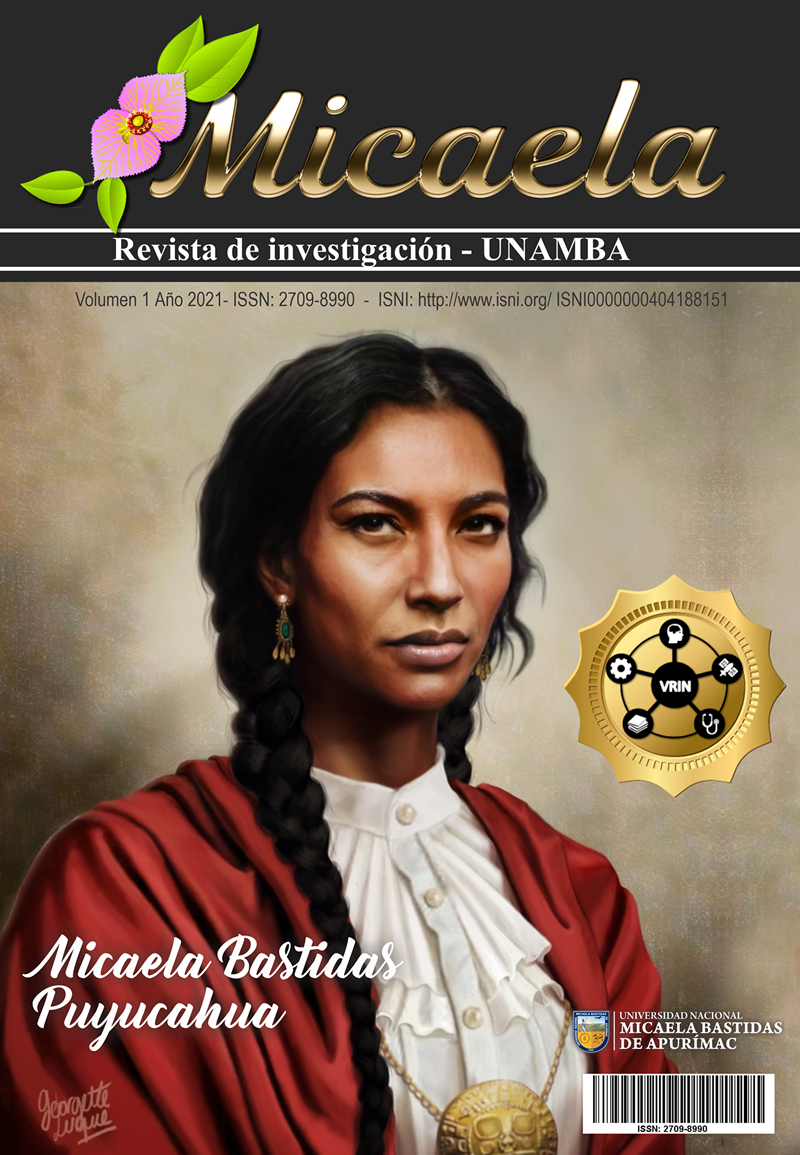El analfabetismo en el Perú y el intento por erradicarlo
Contenido principal del artículo
Resumen
Age should not be considered a discriminatory element to deny access to education to older people. The acquisition of knowledge is part of fundamental human rights. The present article aims to present illiteracy as a human and social phenomenon with educational connotations and, as a secondary objective, to know and evaluate the literacy projects carried out by the Ministry of Education to eradicate illiteracy. His method is based on documentary-type research. As a technique, it uses the analysis of the current context of educational opportunities for older illiterates. In relation to the population, sample and sample unit of study, we do not work with people because the study is documentary in nature. The question arises: Can Peru eradicate illiteracy by 2022? The investigation revealed that of the literacy projects carried out by the Ministry of Education for 76 years, the latest and most ambitious is the "Zero Literacy Plan in Peru", applied for four years and has served 2,700,000 people. of which one million 670 thousand already know how to read and write, and five hundred thousand are about to do so. It is concluded that after fifteen years to achieve a country "with zero illiterates" there are significant advances, but it is required that the modalities of adult education focus on human and cultural attention so that in this way it has effects on their lives as subjects social.
Detalles del artículo

Esta obra está bajo una licencia internacional Creative Commons Atribución-NoComercial-SinDerivadas 4.0.
Los nombres y las direcciones de correo electrónico introducidos en esta revista se usarán exclusivamente para los fines establecidos en ella y no se proporcionarán a terceros o para su uso con otros fines.
Cómo citar
Referencias
Rivero, J. (2015). La educación inconclusa. Revista Idéele, N° 246. https://revistaideele.com/ideele/content/la-educaci%C3%B3n-inconclusa
INEI. (2017). Cobertura de alfabetización en el Perú llega al 94,1% de los peruanos de 15 a más años de edad https://www.inei.gob.pe/media/MenuRecursivo/noticias/nota-de-prensa-n199-2017-inei.pdf
Delors, J. (1996). La educación encierra un tesoro. Madrid, España: Unesco http://innovacioneducativa.uaem.mx.8080/innovacioneducativa/web/Documentos/educación_tesoro.pdf
Infante, M y Letelier, M. (2013). La alfabetización de personas jóvenes y adultas en América Latina y el Caribe: análisis de los principales programas. (p. 31). Chile: CEPAL.
Ministerio de Educación. (2005, p. 16). Plan Nacional de Educación para todos 2005 – 2015, Perú. Hacia una Educación de Calidad con Equidad. Lima: MINEDU.
Portugal, E. (2004, p. 16). Tiempos nuevos para la alfabetización en el Perú Lima: CARE, ITDG, ODEINS.
Ministerio de Educación. (2017). Minedu impulsa estrategias descentralizadas para reducir analfabetismo, http://www.minedu.gob.pe/n/noticia.php?id=44264
Ministerio de Educación. (2018). Minedu busca llegar con tasa mínima de analfabetos al bicentenario. https://www.tvperu.gob.pe/noticias/locales/minedu-busca-llegar-con-tasa-minima-de-analfabetos-al-bicentenario
ComexPerú. (2029). ¿Cómo vamos en educación? https://www.comexperu.org.pe/articulo/como-vamos-en-educacion.
Minedu (2020). Día del Perú Libre de Analfabetismo: ¿cuál es la importancia de esta fecha? https://www.tvperu.gob.pe/novedades/tvperu/dia-del-peru-libre-de-analfabetismo-cual-es-la-importancia-de-esta-fecha
Colectivo por una EPJA Transformadora (2019, p. 10). https://tarea.org.pe/wp-content/uploads/2019/10/CEAAL_EBA-2021_EPJA-2036.pdf






